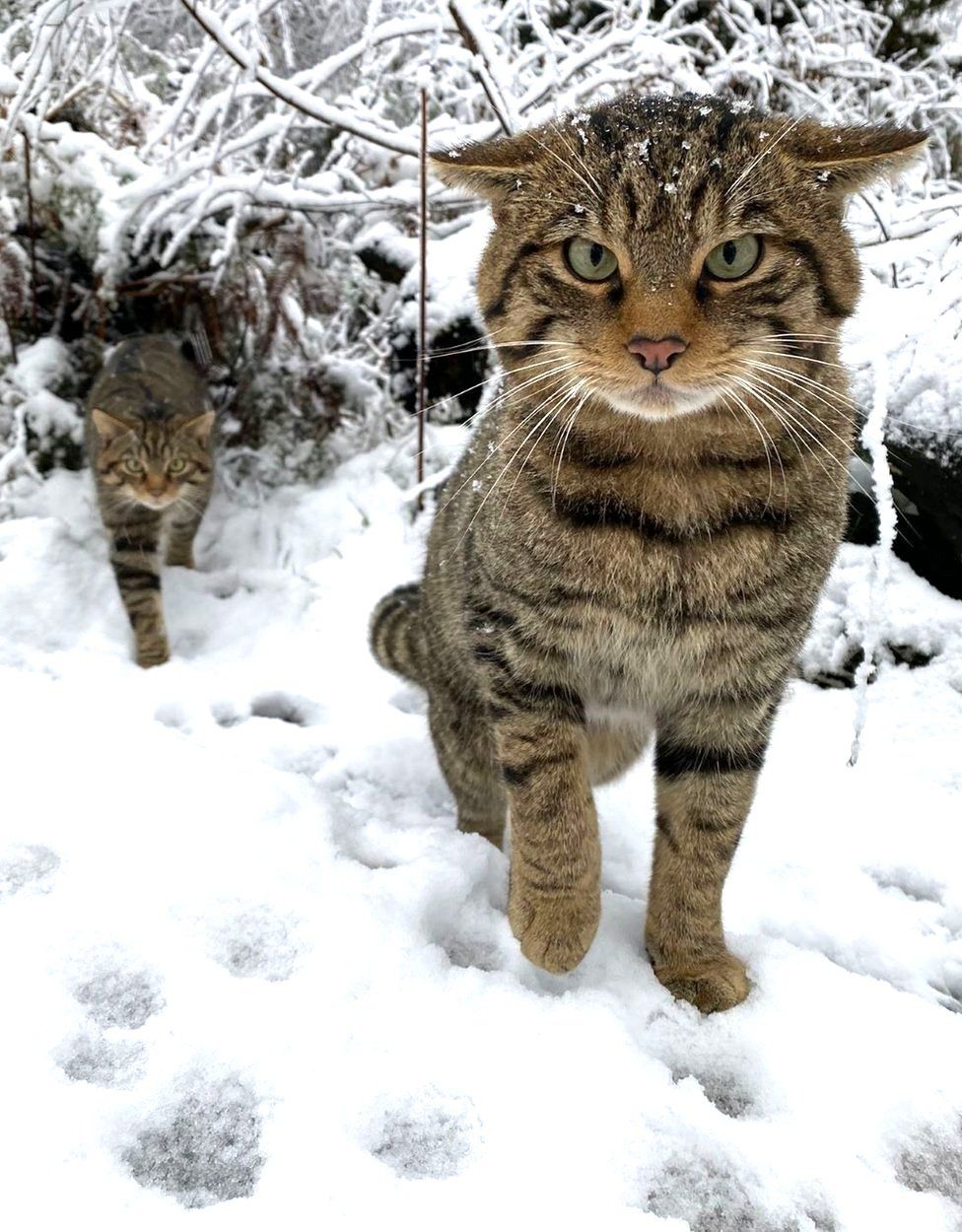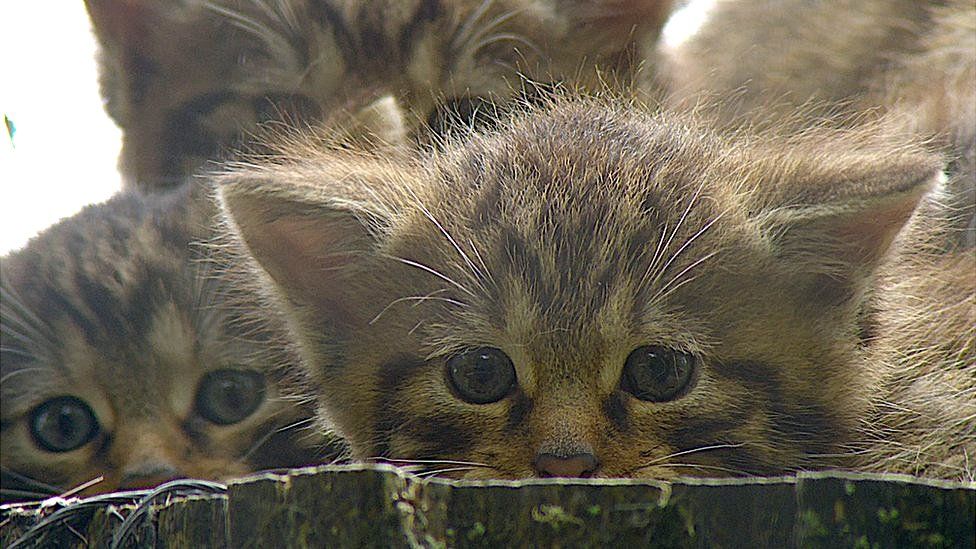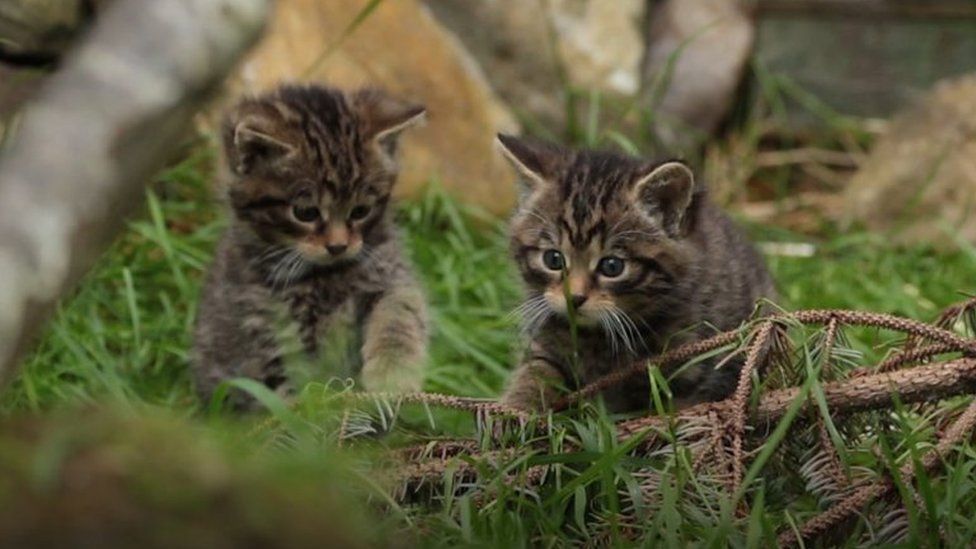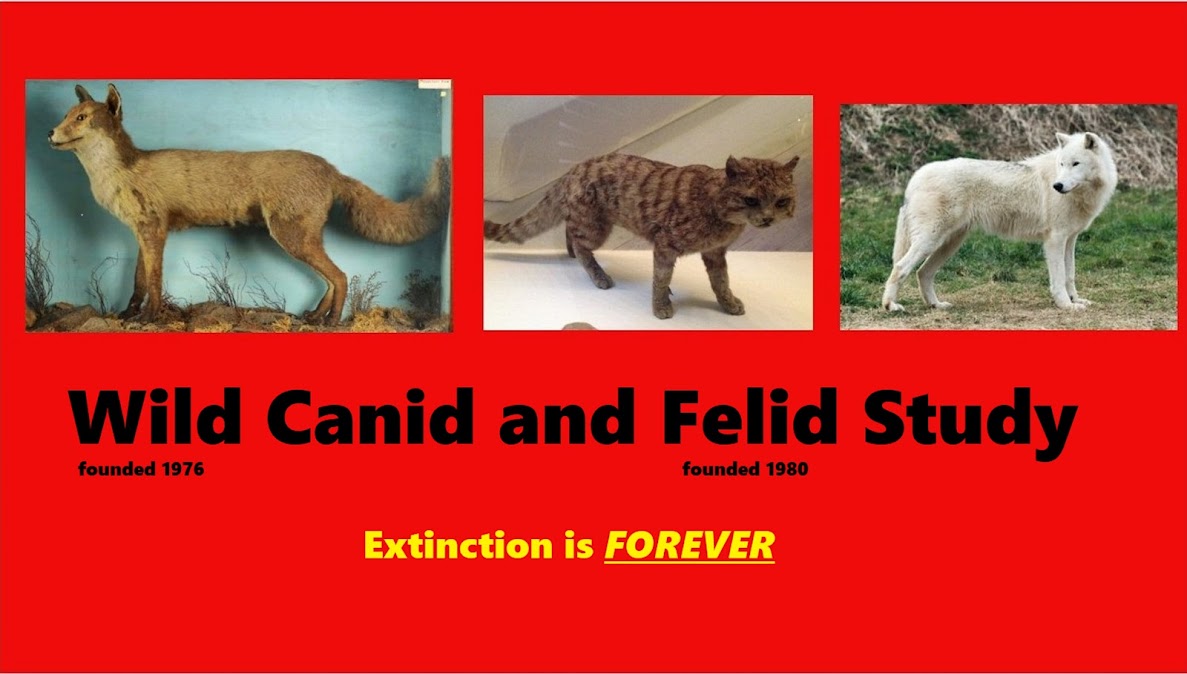Apologies for the photo but it demonstrates what we are looking at in some fox deaths and especially from Bristol as part of the Fox Deaths Project.
Thursday 30 March 2023
Was This Fox Poisoned?
Streptococcus canis and Pneumonia in UK Foxes
(c)2023 respective copyright holder
Showing why collapsing foxes that then die and exhibit odd symptoms are not just road traffic accidents or "poisoned". This is from the post mortem report.
Wednesday 29 March 2023
It's March -"Cat Killing Foxes" Lie Season Begins
Please be aware that it is cub season and the hunt supporters have already started with their 'cat killer' fox posts.
Sunday 26 March 2023
Re-introducing an extinct species (the wild cat) because it makes some people feel good
This story sounds great until you realise that, in 1890, Scottish naturalists declared that the "true wild cat" was extinct by the 1860s and this is backed up by modern research. This is simply the legal introduction of a non native species.
Were these cats afforded full monitoring and protection with some backbone then it would be interesting. However, and I do really hope that I am wrong, I feel more than a few are going to end up as hunting trophies or shot because "I thought they were hybrids". Humans really have no right to reintroduce what they exterminated after a many centuries long campaign of felicide because it makes them think they are "restoring a natural predator" to "save a species" that died out around 150 years ago.
Scottish wildcats to be released in Cairngorms
https://www.bbc.co.uk/news/uk-scotland-highlands-islands-65065167?fbclid=IwAR3J0eFjH9KUN9qrkgrUNtIieQ09MHwtE7d9NoO-h6jrnlCLOFZssvcPX1A
A licence has been approved for the release of captive-bred Scottish wildcats in the UK's largest national park.
The first in a series of trial releases at undisclosed locations in the Cairngorms National Park is planned for June.
The Saving Wildcats project said it would be the first conservation translocation of wildcats in Britain.
Eventually, as many as 20 wildcats could be released annually.
There are wildcats in the wild in the Cairngorms, but the population is under threat.
According to research, the wild cat is on the brink of extinction. Breeding with feral domestic cats, disease and habitat loss have been blamed for reducing numbers.
Scotland's nature agency, NatureScot, approved the licence for this summer's release.
It assessed Saving Wildcats' application in line with the Scottish Code for Conservation Translocations.
The process considers a range of issues including animal welfare, site suitability and potential impacts on neighbouring and community interests.
Saving Wildcats, which involves a number of organisations, has been breeding the animals at Royal Zoological Society of Scotland's Highland Wildlife Park at Kincraig, near Aviemore.
The wildcats are to be released in a 232 sq mile (600 sq km) area involved in a landscape conservation project called Cairngorms Connect.
It is a partnership of neighbouring land managers - Wildland Limited, Forestry and Land Scotland, RSPB Scotland and NatureScot - working towards a 200-year vision to enhance habitat, species and ecological processes.
 IMAGE SOURCE,SAVING WILDCATS
IMAGE SOURCE,SAVING WILDCATSNatureScot's head of biodiversity, Dr Katherine Leys, said Saving Wildcats offered a lifeline for the species.
She said: "This journey is not without difficulty, and we know that there are more hurdles to overcome before we reach the point where we are ready to release the wildcats into carefully selected areas of the Cairngorms National Park.
"Once there, the wildcats will face further challenges, so it's crucial the project continues to work with local communities, farmers, land-owners and cat owners to ensure wildcats are given the best chance to survive and thrive."


Saving Wildcats project lead and Royal Zoological Society of Scotland's head of conservation, Dr Helen Senn, said: "When the time comes, we will be able to move wildcats under licence from pre-release enclosures at Highland Wildlife Park to carefully selected areas in the Cairngorms Connect landscape which provide a suitable mix of habitats and potential prey for the species.
"After release, the wildcats will be monitored using GPS collars as they face the many challenges of life in the wild."
She added: "The fight to restore Scotland's wildcat populations is just beginning and we are grateful to everyone providing expertise and support along the way."
 IMAGE SOURCE,SAVING WILDCATS
IMAGE SOURCE,SAVING WILDCATS IMAGE SOURCE,SCOTTISH WILDCAT ACTION
IMAGE SOURCE,SCOTTISH WILDCAT ACTIONWildland Limited is a company owned by Danish billionaire Anders Holch Povlsen and his wife Anne.
Director of conservation Thomas MacDonell said the company was delighted to be part of the effort to restore wildcats.
Farming union, NFU Scotland, said NatureScot's approval of a licence was "fantastic news".
Policy manager Penny Middleton said: "As a supporter of the official body, the Scottish Wildcat Action forum, we have previously helped disseminate information on how to protect this iconic native species to our members in the priority areas identified for wildcats, including the Cairngorms National Park area.
"We recognise that the species remains critically endangered and that the plans through the Saving Wildcats project to preserve the species are starting to come to fruition."
She added: "The farming community in release areas will be keen to support these plans and identify how they can assist."
Friday 17 March 2023
Royal College of Veterinary Surgeons ob Fox (wildlife) "Initial and essential welfare needs"
Apparently certain vets still being awkward over treating foxes.
Monday 13 March 2023
We Do Not Have Grey Foxes In The UK...Well, Yes We Do!
In The Red Paper 2022 Volume I -Canids I discussed foxes at length. No big surprise there! But I mentioned things I had noticed about foxes in the last 47 years since I set up the British Fox Study in 1976.
Well, sweeping dogma aside opened my eyes to the true history of foxes in the British Isles (UK, N. Ireland/Eire) such as island foxes because most books copying from other books in which the author has just cited dogma will tell you that Scottish Isles and others never had foxes and all sorts of silly explanations are given when a fox is found -"It sneaked onto a car ferry" or even "Some idiot released it on the island". the truth is that foxes are great swimmers and in many cases have existed on islands for a long time and take care of rats and even rabbits that are cited as "nuisances".
The other thing I discovered was that some foxes do have ringed tails. The old myth was that rings only appeared after fox furs were treated (tanning) but one taxidermy of a fox sent to Australia for hunting and which was killed in the 1930s has a markedly ringed tail. Enough photographic evidence now exists to show it is not rare.
In 1976 if anyone even told me that one day I would see a striped fox I would have told them to see a psychiatrist. Yet I have now seen a fox with clear stripes on its side -we nicknamed it the "thylacine fox".
Another thing that I set up was a photographic data base of foxes from around the UK and Eire. The initial idea was to look for regional types. I knew Somerset and parts of Bristol had what I termed "salt and pepper" foxes as shown below.
(c)2023 respective copyright owner
Before anyone asks the fox has its tail curled around to one side. The dark grey shows that there is melanism in the fox and that may well come down through descendancy from European foxes imported over the centuries. I had assumed that this was a regional thing but then realised that during the 1994/1994 mange outbreak that swept through Bristol (and I am still investigating claims that this was a deliberate spread) we lost all but roughly 6% of foxes in the City. Adding in other factors I was left with a big question mark.
The City had the cherry red type foxes, orange coloured and the salt and pepper type. Of course, I then realised that wildlife rescues were releasing foxes they had treated into the Bristol area as it was considered "safe" with no local hunt. There is nothing safe about Bristol as its roads take a high toll of foxes, badgers, otters and other wildlife. Releasing foxes into an urban environment is not a good idea although I do understand the thinking of the rescues.
With the number of foxes dying on the roads, through illness and other causes I believe the national population would now be on the precipice of extinction (again). Rescues take in cubs and adult foxes to treat and then release when ready and there are things I have certainly noticed.
One being that, although mange is always present to some degree, the number of cases increases during dispersal/rescue release periods. The first year I had assumed it was nothing. The second year I thought coincidence but the third and fourth year it was establishing a set pattern.
After almost 50 years of studying foxes along with the work I began on exotic animals and acting as a consultant to UK police forces (from 1977) you might think that helped get cooperation from rescues. It does not. Rescues flatly refused to give out any basic information on where foxes they had cared for originated or where they were released around the country. In some cases they claimed to have no record regarding where rescued or where released. I was told by one rescue that they released around 150 foxes a year yet publicly they later claimed hundreds more.
I asked whether the released foxes were microchipped and one response "Don't be ridiculous" summed up most responses. What was the point? Well, if it was found that a fox had a disease or illness then a micro chip would state where it came from so any treatment could be given or watch kept. Basic stuff really. What treatment did foxes get before release? Some said a spot on wormer but if the foxes looked okay and were given the okay that was it. Secret World in Somerset basically gives foxes treatments for most things they will encounter on release.
Rescues have a hard time and (as I can tell you from personal experience) getting donations is a hard business (and if it's "just foxes" good luck) so everything is done on a shoe string. The attitude of most rescues appears to be "We patch them up and release them. Job done." Also "foxes are put in the care of a trustee to feed and acclimatise to an area prior to and just after release. It is up to them whether they want to cooperate with you" so I asked "Can you pass the word along, please?" Response: "No, we are far too busy".
One day it will become necessary for rescues to become licence for animal safeguarding and I am afraid official government bodies do not accept "we are far too busy". Apart from welfare checks to insure that animals are not over crowded and getting the treatment they need I hope licensing does not come into force -rescues have the "It's just foxes" attitude helping them.
Really, every -every- rescue should give foxes to be released protection against the illnesses and diseases they are liable to encounter. I say "should" because, again, it all costs money and donors are not rushing forward to help.
I cannot see the rise of mange at dispersal time as mere coincidence.
And before my dear Reader rolls his/her eyes and sighs "This is going to be one of those long Hooper-Scharf posts" I will get to the point.
I mentioned the colourations of foxes and when I wrote "our grey foxes" on a post someone decided that I had no idea what I was talking about "Grey foxes are from the United States not England!" he wrote. Well, firstly, correct. Secondly, wrong (and it's the "UK" not "England"). The Grey Fox (Urocyon cinereoargenteus) is indeed a native of North America, however, when I refer to "grey foxes" in the UK I am not referring to North America and the clue is that I am writing on British foxes.
Apart from one fox photographed some years back with a black coloured back the main foxes in Bristol were red/orange coloured (Vulpes vulpes) and the salt n pepper type. So when I saw a photograph of a grey coloured fox I sat up! I know of two grey foxes still alive but three others were all victims of car strike and so not exactly photographs I can publish here. I then found more and more signs of melanism in not just Bristol foxes but nationally. I was told by people who had been fox watching for a long time that "a very strange fox turned up. Odd colour" and when I asked at what time of the year this strange fox arrived -dispersal/rescue release time.
I found other long time foxers reporting the same thing and that more or less is good anecdotal evidence that some thing is going on. I checked the photo data base and while I expected grey colouration from the SE of England (foxes dumped after the failure of fur farming in and around London -a business that no one wants to discuss) but then I realised that the grey was spreading out more. The melanistic streak was also showing through more and more and by 2022 it was impossible to not notice.
I ought to point out that fox watchers and feeders had no idea that these colourations were unusual or noteworthy and it was a case of "They are just foxes nothing odd about the colour is there?" I wish people watching foxes and feeding them actually read up on foxes (I have a book out you know),
My thanks to the photographers but to protect animals only rough locations are given and most also did not want to be named in case they were tracked down (we have the internet after all) and animals harmed.
Aberdeenshire 2022 (c)2023 respective copyright owner -sunlight making the colouration more brown than black in this image.Surrey, 2021 (c)2023 respective copyright owner
`
Kent 2021 (c)2023 respective copyright ownerScotland 2021 (c)2023 respective copyright owner -the animosity shown foxes by magpies is noted down in Medieval texts so nothing unusual here!London 2021 (c)2023 respective copyright owner
London 2022 (c)2023 respective copyright owner
Bristol 2023 (c)2023 respective copyright owner - at the time first seen (evening) it was thought to be a wholly black fox but it's melanism/greyness is quite visible.
Sussex 2021 (c)2023 respective copyright owner Striking in appearance and there are quite a few similar foxes on record from the SE
Above and below: Bristol 2022 (c)2023 respective copyright owner. This is the photograph that really made me understand that there were changes going on and to get a better photograph for me the woman who took this threw some food out for a daytime shot. Which almost makes it (in sunlight) look like a totally different fox.(c)2023 respective copyright owner
Bristol 2022 (c)2023 respective copyright owner
The following two photographs are from a woman in the SE of England who, when she first encountered this beauty, jumped as it was so tall. Very likely a hybrid with North American Red Fox
Above and below 2021 SE England (c)2023 respective copyright owner The fox below was also tall and likely a descendant of the one above. These tall foxes were all poisoned by someone in the street involved each year and police and RSPCA had no interest in investigating -hence why we protect all locations.What should I do if an animal is trapped on a sticky mouse board? Experts teach you the ultimate trick: "Salad oil + flour"
I must admit that I was glad when they made sticky traps illegal in the UK. They are nasty and slow ways for an animal to die and hedgehogs ...

-
Below: one of the foxes marked to be killed Two foxes successfully treated and cured of mange. They take rats. City of Bristol College is...
-
Photo © eMammal / Flickr. Wolong National Nature Reserve, Sichuan, China. CC BY-NC-SA 2.0 As noted before, the Fox study is aimed at Briti...
-
Today I heard of yet another location where a "family of foxes" have been fed by humans lost their fear of them. Quite tame. How...

















.jpg)





